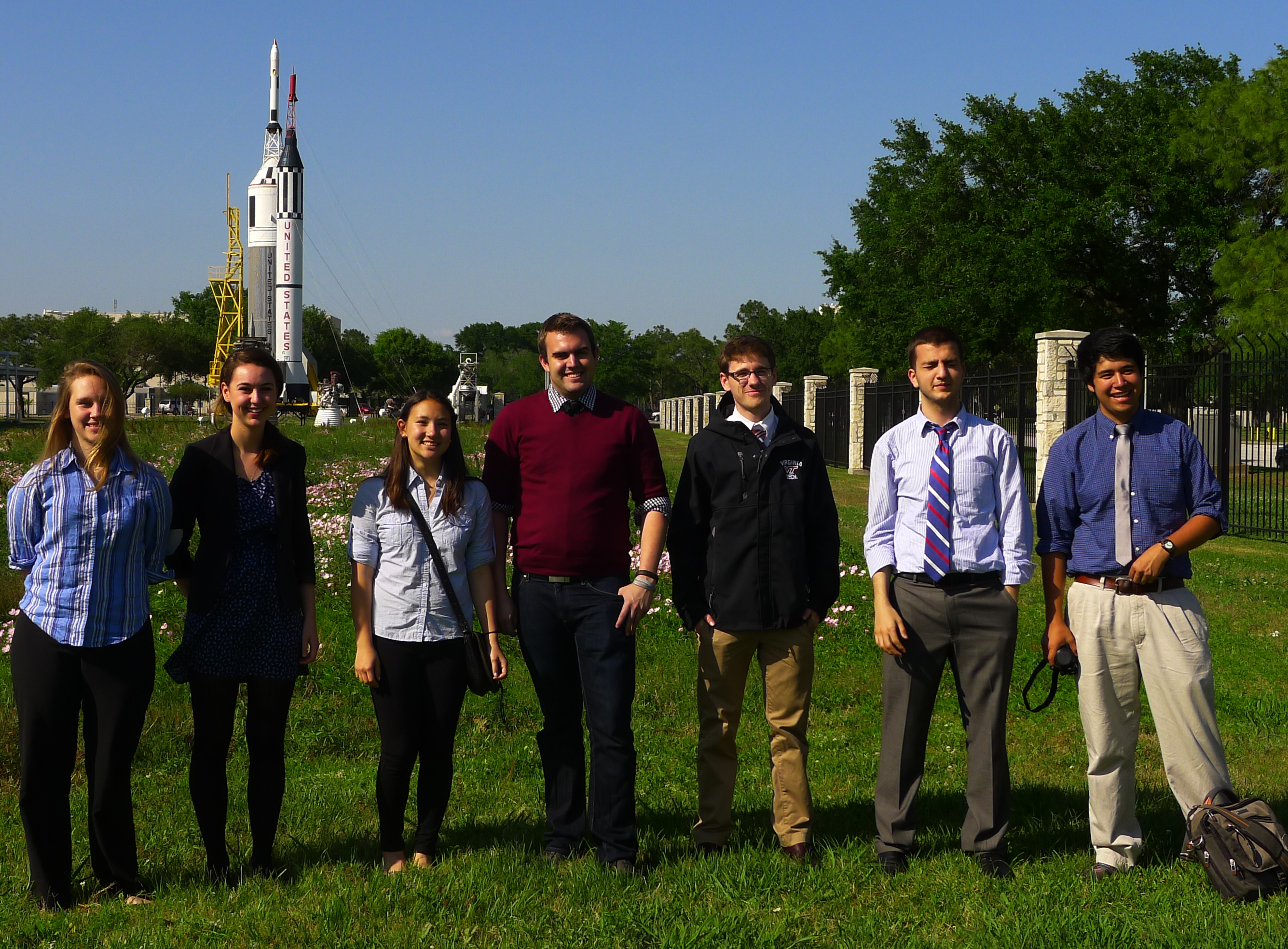Interdisciplinary student teams present out-of-this-world textiles to NASA

Three interdisciplinary teams composed of students from Virginia Tech’s College of Architecture and Urban Studies and the College of Engineering recently travelled to NASA’s Johnson Space Center in Houston, Texas, to participate in the Wearable Technology Symposium.
Students from a Textile Space class in the School of Architecture + Design formed teams with students from the Bradley Department of Electrical and Computer Engineering to present their solutions to three textile design challenges posed by NASA.
During the symposium, each of the three teams from Virginia Tech gave a seven-minute presentation, followed by a table and board discussion, similar to a science fair, that allowed NASA scientists and officials to interact with students and ask questions about their projects.
Sarah Duffau of Palmyra, Va., and Rebecca Meyer of Yorktown, Va., both first-year architecture majors in the College of Architecture and Urban Studies, presented their project on reconfigurable and adaptable intra-vehicular clothing for long term space missions.
Kate O’Connor, of Alexandria, Va., a fifth year architecture major, Ashleigh Otto of Louisa, Va., a first year student majoring in industrial design in the College of Architecture and Urban Studies, and John Murphy of Rockbridge Baths, Va., a sophomore majoring in computer engineering in the College of Engineering, collaborated on a design for a hands-free jetpack control boot.
Chris Drudick of Charlotte, N.C., a fifth year architecture major, Mahmood Alwash of Baghdad, Iraq, a senior majoring in electrical engineering in the College of Engineering, and Mark Koninckx of Kennett Square, Pa., a sophomore majoring in computer engineering, presented their real-time visualization of the shape of inflatable structures during deployment, based on NASA’s work to develop inflatable structures for use in space.
It was a valuable opportunity for the students to work on real challenges for a client and gain experience giving formal presentations. The interdisciplinary teamwork on the projects was also a learning experience for them.
“The NASA project was a unique opportunity to test and challenge the design thinking the College of Architecture and Urban Studies teaches,” said O’Connor. “There was a little bit of a learning curve to the interdisciplinary conversation, but by the end of the project we all had newfound respect for each other’s abilities. What is more, we all came out of this class with some new, unexpected skill sets. The engineer in my group turned out to be pretty good at sewing and I got a crash course in CSS and responsive technology.”
The three teams were led by Paola Zellner, an assistant professor in the School of Architecture + Design in the College of Architecture and Urban Studies, who teaches the Textile Space course, and Tom Martin, an associate professor in the Bradley Department of Electrical and Computer Engineering in the College of Engineering whose research focuses on e-textiles and wearable computing. Martin also has a courtesy appointment in the School of Architecture + Design.
Virginia Tech was invited to participate in the program along with Georgia Tech and the University of Minnesota — all universities that have smart textile efforts. Virginia Tech’s participation was supported by Virginia Space Grant Consortium and Virginia Tech’s Institute for Creativity, Arts, and Technology.
As part of the symposium, students were able to tour NASA’s facilities and hear presentations by NASA officials, gaining new perspectives on their work.
“When we were in Houston, one of the NASA program partners made a really interesting point: Our generation is fervidly developing new technology for global communication, but perhaps all our gadgets and texts have kept us from thinking past our planet. We're losing the passion our parents and grandparents had for learning more about the universe. Projects like this one are keeping that star-gazer curiosity alive and finding a fresh perspective from people with diverse interests,” said O’Connor. “I would like to see the program continue — I know NASA is interested in doing more inflatable architecture research and I hope Virginia Tech continues to engage and expand on the questions they're asking.”
Dedicated to its motto, Ut Prosim (That I May Serve), Virginia Tech takes a hands-on, engaging approach to education, preparing scholars to be leaders in their fields and communities. As the commonwealth’s most comprehensive university and its leading research institution, Virginia Tech offers 240 undergraduate and graduate degree programs to more than 31,000 students and manages a research portfolio of $513 million. The university fulfills its land-grant mission of transforming knowledge to practice through technological leadership and by fueling economic growth and job creation locally, regionally, and across Virginia.







